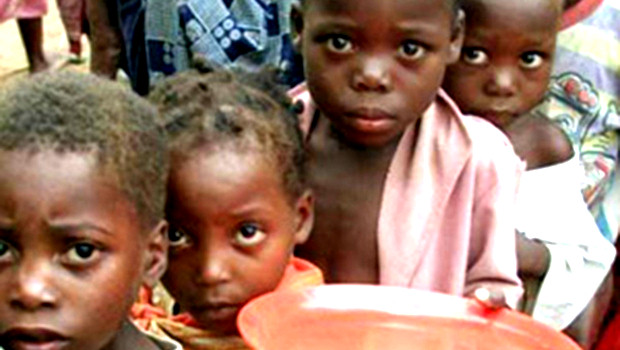The dramatic drought in the south of Madagascar
Humanitarian organizations describe a drought of unprecedented proportions in southern Madagascar.
Episodes of acute precipitation shortage occur repeatedly in the region.
Forgotten humanitarian crises in the world... Madagascar on the front line
This situation has a name: kéré, "famine" in Malagasy. From Tuléar to Fort-Dauphin, some areas have not received rain since January 2020. People are cooking roots, relying on mangoes or cacti to feed themselves. 1.5 million people urgently need help, the world looks away because it is busy with Covid.
There were about 260 deaths from covid in 10 months, how many from starvation or thirst?
Nearly 20,000 children under the age of five are at risk of severe malnutrition, requiring medical attention. In addition, the Covid outbreak has closed schools so that schoolchildren can no longer get a daily meal.
The drought is causing a dramatic famine in the south of Madagascar, which I have already reported on in the following blog entries:
https://www.urlaub-auf-madagaskar.com/die-ueberlebensmigrationen-im-sueden-von-madagaskar/
and also
https://www.urlaub-auf-madagaskar.com/nahrungsmangel/
Despite low mortality from Covid, incredible sums of money have been poured into Antananarivo by the WHO and France, but the south is forgotten as always.
Internal migrations out of necessity
Meanwhile, starving migrants from the deep south arrive daily as far as the capital Antananarivo.

Madagascar's territory is characterized by very strong spatial inequalities that juxtapose overpopulated areas with empty ones. Migration can therefore be challenged as a means of reducing demographic pressure and agricultural underemployment in certain regions, and at the same time as a means of managing areas that are currently untouched due to a lack of farmers.
Migration could then be one of the building blocks for breaking the demographic-economic impasse.
Improved utilization of rural and, by extension, agricultural land could also help achieve development goals by increasing agricultural production, reducing underemployment, and thus poverty among rural populations.

These people have no access to information or even imagination of what it might be like outside their meager sphere of life.
There are no more alternatives between starving and dying of thirst or the distant uncertainty.
Global movements from the South to the North - a little-known migration of peoples
A growing phenomenon. In recent years, there has been a significant increase in internal migration flows from the south of the country to urban centers and rural areas in the west and northwest.
While internal migration is not a new phenomenon in Madagascar, the dynamics underlying it have changed significantly and worsened. It is having an impact that was not seen before and is disrupting local, regional and national social, political and economic dynamics.
Climate problems favor long-distance migration.
The victims of Kere (drought and famine in the south of Madagascar) in the south of the island have migrated to the regions of Menabe or Atsimo-Andrefana in the last 100 years.

Missing statistics
Madagascar does not have sufficient data on internal migration. One of the reasons for the creation of an Observatory of Internal Migration, the result of a partnership between the International Organization for Migration (IOM), UNDP and CNRE. Its creation will allow to strengthen surveys to assess the current situation and determine the results.
In fact, the Observatory is intended to be a first structure in the country that will serve as a reference platform to study, produce and refine over time knowledge on a range of social, political, economic and environmental parameters and issues that arise in Madagascar in relation to internal migration phenomena.













